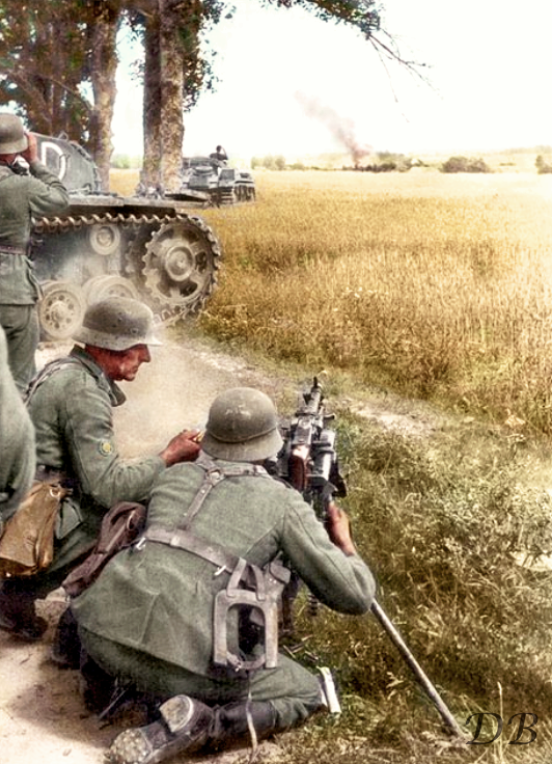
The Leningrad front from May 1942 to January 1943.
With the defeat of the Soviet Lyuban Offensive, the Germans began to reconsider the wisdom of committing the bulk of Heeresgruppe Nord to an extended siege operation. Führer Directive 41, issued on 5 April 1942, reversed the previous decision to besiege Leningrad and directed Küchler to capture the city. The OKH assured Küchler that he would be provided sufficient reinforcements for a summer offensive. Once Sevastopol fell on 4 July, the bulk of Manstein’s AOK 11 became available for redeployment and Hitler decided that four of its infantry divisions and its heavy artillery would be transferred to the Leningrad front.
In light of Führer Directive 41, Küchler’s staff developed three main offensive plans regarding Leningrad for the summer of 1942: Operation Nordlicht (northern lights), Operation Bettelstab (beggar’s staff) and Operation Moorbrand (moor fire). The last two were both relatively small- scale offensives, employing only three divisions; the first aimed at eliminating the Oranienbaum bridgehead and the other a pincer attack against the Pogost’e salient. However, Nordlicht was a major undertaking and would not be feasible until Manstein’s AOK 11 arrived. On 23 July, Führer Directive 45 specified that Leningrad should be captured by early September and recommended that the two smaller operations should be completed first to free up reserves for the main event.
Despite a window of opportunity in July-August, Heeresgruppe Nord remained on the defensive and decided to forego even a limited offensive until significant reinforcements arrived. Owing to transportation difficulties, Manstein’s headquarters did not arrive on the Leningrad front until 27 August and his four infantry divisions (24., 132. and 170. Infanterie-Divisionen, and 28. Jager-Division) began trickling in shortly afterwards. These AOK 11 divisions still retained the triangular nine- battalion structure and were much stronger than most of the reduced-size divisions in AOK 18. Küchler also received the 3. and 5. Gebirgsjager- Divisionen from Norway and the Spanish 250. Infanterie-Division. Luftflotte I was reinforced to over 250 operational aircraft in July 1942. Once the forces began to assemble on the Leningrad front, Hitler decreed that Manstein’s AOK 11 would conduct Operation Nordlicht with a total of nine divisions, while AOK 18 held the Volkhov. The offensive was tentatively expected to begin on 14 September and conclude by the end of the month.
After his costly victory at Sevastopol, Manstein was not sanguine about fighting his way into a major city like Leningrad defended by more than 200,000 Soviet troops. In particular, he lacked sufficient assault pioneers and assault guns – two of the critical force multipliers used at Sevastopol – to conduct effective urban combat operations. The original Nordlicht plan developed by AOK 18 staff called for a major breakthrough attack conducted by four divisions out of Pushkin – basically a continuation of the September 1941 attack – followed by a direct assault into the southern end of Leningrad. Instead, Manstein altered the plan by emphasizing envelopment rather than assault. In Manstein’s revised Nordlicht plan, five German divisions would seize the Pulkovo Heights and then snip off the Kolpino salient, followed by an assault crossing of the Neva River. Once bridgeheads were established across the Neva, Manstein intended to push the 12. Panzer-Division and four infantry divisions across the river to roll up the Soviet 55th Army and then advance northwards towards the Leningrad-Osinevets railway line. If successful, Manstein’s forces would cut all Soviet supply links across Lake Ladoga, thereby ensuring the rapid starvation of Leningrad’s garrison. As usual, there was a great deal of risk in Manstein’s plan since he had to strip Heeresgruppe Nord of virtually all reserves, leaving the Volkhov sector vulnerable to attack.
Amazingly, the Germans undertook no offensive actions against Leningrad at all during the summer of 1942. However, the besieged Soviet forces in Leningrad took no summer break. Fearing a renewed German push against Leningrad, Govorov ordered both the 42nd and 55th armies to conduct spoiling attacks against the German L AK lines. The 42nd Army attacked the 215. Infanterie-Division near Uritsk on 20 July with two rifle divisions, followed by the 55th Army attacking the SS-Polizei-Division south of Kolpino on 23 July with a rifle division and a tank brigade. Both attacks gained a little ground against the complacent L AK and forced Kuchler to divert some of the units forming up for Nordlicht, reinforcing the siege lines with 5. Gebirgsjager-Division. However, AOK 18 quartermasters did use the summer months to build up supply bases at Siverskaya, Tosno and Lyuban, while engineers improved the road and rail network behind the lines. These logistical improvements would serve AOK 18 well during the defensive battles of 1942/43.